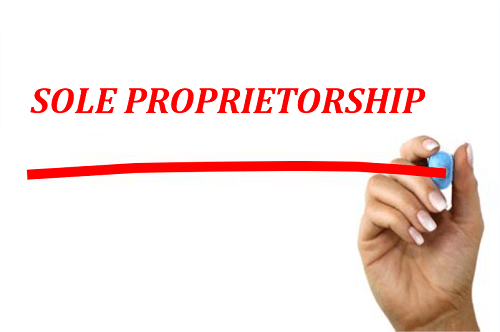In the realm of business ownership, sole proprietorship stands as a popular choice due to its simplicity and ease of setup. However, it is crucial to understand the potential risks associated with this business structure, particularly the concept of unlimited liability. This article aims to delve into the intricacies of unlimited liability in sole proprietorship, exploring its implications, drawbacks, and the importance of considering alternative business structures.
- Understanding Unlimited Liability:
Unlimited liability refers to the legal responsibility of a sole proprietor for all debts and obligations incurred by their business. Unlike other business structures, such as corporations or limited liability companies (LLCs), sole proprietors are personally liable for any financial losses or legal claims against their business. This means that personal assets, including savings, property, and investments, are at risk in the event of business failure or legal disputes. - Implications of Unlimited Liability:
2.1 Financial Risk: The absence of a legal distinction between the owner and the business exposes the sole proprietor's personal assets to potential loss. Creditors can seize personal property to satisfy business debts, leading to severe financial repercussions for the owner.
2.2 Legal Vulnerability: Sole proprietors face the risk of lawsuits and legal claims, which can result in substantial damages and legal expenses. Without the protection of limited liability, personal savings and assets may be depleted to settle legal disputes, jeopardizing the owner's financial stability. - Drawbacks of Sole Proprietorship:
3.1 Limited Access to Capital: Due to the inherent risks associated with unlimited liability, sole proprietors may find it challenging to secure loans or attract investors. Financial institutions and potential partners may be hesitant to engage with a business structure that places personal assets at stake.
3.2 Lack of Continuity: Sole proprietorship heavily relies on the owner's involvement, making it difficult to ensure business continuity in the face of illness, retirement, or death. The absence of a formal succession plan can lead to the dissolution of the business, resulting in the loss of established customer relationships and market presence. - Alternatives to Sole Proprietorship:
4.1 Limited Liability Company (LLC): Forming an LLC provides the benefits of limited liability while maintaining the simplicity of a sole proprietorship. This business structure separates personal and business assets, shielding the owner's personal wealth from business liabilities.
4.2 Incorporation: Establishing a corporation grants the highest level of liability protection. Shareholders' personal assets are generally safeguarded from business debts, and the business can exist independently of its owners. However, corporations involve more complex legal and financial requirements.
4.3 Partnerships: Joining forces with one or more individuals through a partnership allows for shared liability and resources. Limited partnerships (LPs) and limited liability partnerships (LLPs) offer varying degrees of personal liability protection, depending on the jurisdiction.
Conclusion:
While sole proprietorship offers simplicity and autonomy, the concept of unlimited liability poses significant risks to the owner's personal assets and financial well-being. Understanding the implications and drawbacks of this business structure is crucial for entrepreneurs seeking to make informed decisions. Exploring alternative business structures, such as LLCs, corporations, or partnerships, can provide greater protection and long-term sustainability. By carefully considering the potential consequences of unlimited liability, entrepreneurs can navigate the business landscape with confidence and mitigate unnecessary risks.



More Stories
Smart Manufacturing Factory Layout for High-Efficiency Operation
Global Demand for Microwave Tomography Systems: What Medical Device Importers Should Know About Technology, Certification, and Procurement
Smart Factory Planning and Lean Layout Synergy